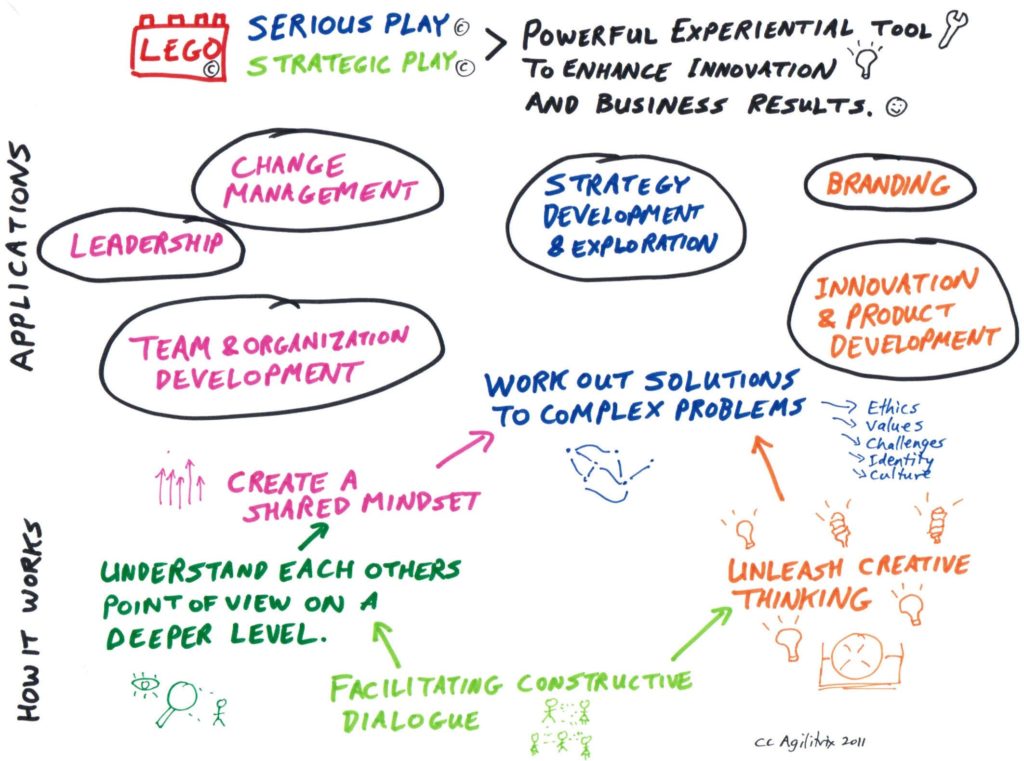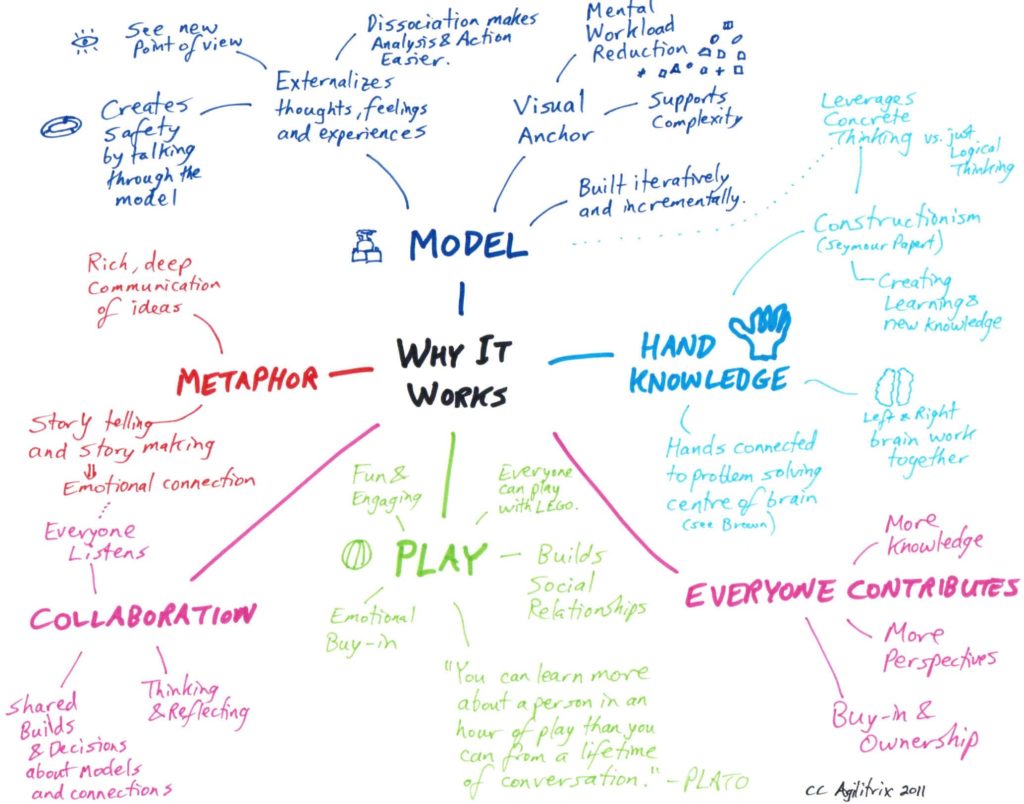StrategicPlay® with Lego® SERIOUS PLAY® is a powerful experiential tool to enhance innovation and business results. This post provides a brief introduction to summarize what I learned when I attended the amazingly good facilitator training with Jacqueline Lloyd Smith last month.
Understand Complex Problems
For me, the heart of StrategicPlay® is that is brilliantly assists a group to create a shared understanding of complex problems and of each other. Consider the complex model constructed below that was evolved iteratively over the course of the day through phases of building, storytelling, and integration. The physical model has no inherent value – it is the meaning the participant place on it, the decisions, and mental models that matter.

Applications and How it Works
Consider the diagram below. The ovals identify some typical applications of StrategicPlay® and below them you can see the mechanisms used to achieve these results.

At it’s most basic, StrategicPlay® is a facilitation tool. Other facilitation tools are sticky notes, GameStorming, and Visual Facilitation.
Why it Works
Below are some of the key reasons why StrategicPlay® works so well. Please read it (click to for full-size picture) as there is too much good stuff to summarize. (If you want a screencast, let me know by twitter or comments).

StrategicPlay® is based on research that shows that this kind of hands-on, minds-on learning produces a deeper, more meaningful understanding of the world and its possibilities. It creates the perfect storm by engaging the brain, body, and emotions of the participants.
 On the right is a crazy picture of a homunculus to help you connect with some of the research. This how psychologists believe our brain is connected with our body. Notice that connections with hands is disproportionately large – when we use our hands, we can use more of our brain. We are wired for using our hands, not for sitting around a table talking.
On the right is a crazy picture of a homunculus to help you connect with some of the research. This how psychologists believe our brain is connected with our body. Notice that connections with hands is disproportionately large – when we use our hands, we can use more of our brain. We are wired for using our hands, not for sitting around a table talking.
Where did this stuff come from?
Starting in 1999, the Lego® company worked with business consultants and psychologists to solve their own problem of developing and effective company strategy. The outcome was the invention of Lego® SERIOUS PLAY® which was made open source in in June, 2010. StrategicPlay® was created to develop new applications and train facilitators. If you are curious, check out this presentation on the History and Evolution of StrategicPlay®. You may also want to get Katrin Elster’s view on How and Why StrategicPlay® works.
Wow! This is Cool! What’s next?
Good news is that this is really powerful. The bad news is that this is a complex tool and requires significant investment.
It’s not like a lot of Agile games where you check out a recipe on TastyCupcakes.org and then you just do it. Sadly, you can’t just dump a bag of random Lego® pieces on the table and expect results.
So here is how to get started:
- If you have never had a chance to experience StrategicPlay®, then that’s the first step. You need to get your own sense of how cool this really is. Ask me or another StrategicPlay® facilitator to give an introductory session in our home town or at a conference.
- Get training in North America (where I went) or in Europe.
- Buy specially designed Lego® kits. Yeah, they’re expensive and you need ’em.


